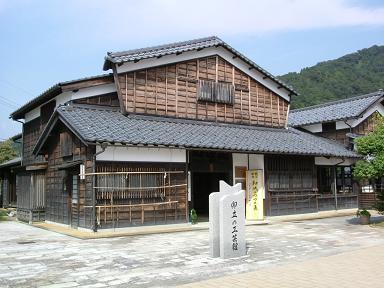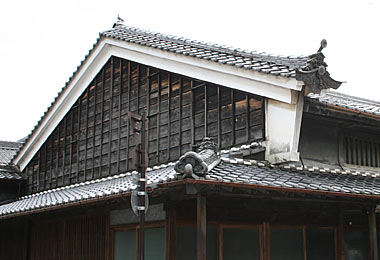L.A. Times criticizes Japan over sumo wrestler's death
Tatsuhito Iida / Yomiuri Shimbun Correspondent
LOS ANGELES--Friday's issue of the Los Angeles Times carried a story harshly criticizing Japanese police over the recent case of a 17-year-old sumo wrestler who died after being beaten by his stablemaster and his stablemates, claiming that police are too reluctant to conduct judicial autopsies.
The article said: "Photos of the dead teenager's corpse show a deep cut on his right arm, horrific bruising...and his legs are pocked with small burns the size of a lit cigarette...The cause of death was 'heart disease,' police declared."
Referring to the decision by Aichi prefectural police not to conduct an autopsy and instead conclude that the wrestler, Takashi Saito, of the Tokitsukaze stable, had died of a health condition, the front-page article said Japanese police "try to avoid adding murders to their case load unless the identity of the killer is obvious."
As reasons for the low rate of implementing autopsies, the article quoted Japanese sources as saying, "Police discourage autopsies that might reveal a higher murder rate in their jurisdiction and pressure doctors to attribute unnatural deaths to health reasons, usually heart failure," and, "There is also a cultural resistance in Japan to handling the dead, with families often reluctant to insist upon a procedure that invades the body of a loved one."
The article concluded that though Japan's autopsy system was introduced by the United States just after the end of World War II, it is not functioning sufficiently.
(Nov. 11, 2007)
洛衫磯時報的
COLUMN ONE
Japan's police see no evil
Kyodo News
HOMICIDE REVEALED: A sumo stable master speaks to the media after apologizing to the family of Takashi Saito, a wrestler whose killing, allegedly permitted by the stable master’s predecessor, was nearly covered up.
The boy had been badly beaten but his death was ruled natural. The case was closed in an official culture that discourages autopsies.
By Bruce Wallace, Los Angeles Times Staff Writer
November 9, 2007
TOKYO — Photos of the teenager's corpse show a deep cut on his right arm, horrific bruising on his neck and chest. His face is swollen and covered with cuts. A silhouette of violence runs from the corner of his left eye over the cheekbone to his jaw, and his legs are pocked with small burns the size of a lighted cigarette.
But police in Japan's Aichi prefecture saw something else when they looked at the body of Takashi Saito, a 17-year-old sumo wrestler who arrived at a hospital in June. The cause of death was "heart disease," police declared.
Related Stories - Wider global role urged for Japan - Strong sales outside Japan drive up Toyota's earnings As is common in Japan, Aichi police reached their verdict on how Saito died without an autopsy. No need for a coroner, they said. No crime involved. Only 6.3% of the unnatural deaths in Aichi are investigated by a medical examiner, a minuscule rate even by nationwide standards in Japan, where an autopsy is performed in 11.2% of cases.
Forensic scientists say there are many reasons for the low rate, including inadequate budgets and a desperate shortage of pathologists outside the biggest urban areas. There is also a cultural resistance in Japan to handling the dead, with families often reluctant to insist upon a procedure that invades the body of a loved one.
But Saito's case has given credence to complaints by a group of frustrated doctors, former pathologists and ex-cops who argue that Japan's police culture is the main obstacle.
Police discourage autopsies that might reveal a higher homicide rate in their jurisdiction, and pressure doctors to attribute unnatural deaths to health reasons, usually heart failure, the group alleges. Odds are, it says, that people are getting away with murder in Japan, a country that officially claims one of the lowest per capita homicide rates in the world.
"You can commit a perfect murder in Japan because the body is not likely to be examined," says Hiromasa Saikawa, a former member of the Tokyo Metropolitan Police security and intelligence division. He says senior police officers are "obsessed with statistics because that's how you get promotions," and strive to reduce the number of criminal cases as much as possible to keep their almost perfect solution rate.
Japan's annual police report says its officers made arrests in 96.6% of the country's 1,392 homicides in 2005.
But Saikawa, who says he became disillusioned by "fishy" police practices and in 1997 left the force in disgust after 30 years, claims that police try to avoid adding homicides to their caseload unless the identity of the killer is obvious.
"All the police care about is how they look to people; it's all PR to show that their capabilities are high," Saikawa says. "Without autopsies they can keep their percentage [of solved cases] high. It's all about numbers."
The former policeman has written a memoir of his time on the force. Called "Policeman at the Scene," it describes a police culture that has chipped away at the effectiveness of an autopsy system created during the U.S. occupation after World War II.
"The police textbooks taught us not to trust doctors," he says, adding that police officers indirectly pressure doctors to sign death certificates without an autopsy. "Doctors are afraid of the police. They are afraid of retaliation. They worry the police could prosecute them for malpractice. So they are easily pressured.
"There is no one refereeing the police," Saikawa says. "It's scary."
After the war, Americans created a medical examiner's office for Tokyo after learning that thousands of deaths in the postwar rubble were being ascribed to starvation without any forensic examination. It was soon discovered that a tuberculosis epidemic was the main culprit.
The system was soon expanded to six other big cities which, for the most part, are the jurisdictions where autopsies are done with the most frequency (in 2004, autopsies were conducted in 29% of Kanagawa prefecture's unnatural deaths; 18% of those in Tokyo). But much of the country remains without a fully functioning medical examiner system.
"There aren't many doctors who want to do this kind of work and that means some areas don't have a medical examiner at all," says Dr. Masahiko Ueno, a former chief medical examiner in Tokyo who spent 30 years in the coroner's office until he retired in 1988. Since then he has written more than 30 books about the cases that animated his career and the cold cases that intrigue him in retirement.
Ueno says his experience leaves him convinced that many homicides are being missed and he, too, blames a system that gives police great discretion over when an autopsy is performed. Although doctors are legally required to report "unnatural deaths" to police, the country's medical act does not precisely define what that is.
The philosophical approach to death investigations differs between the West and Japan.
In the West, autopsies are performed to determine the cause of death. That is one reason the autopsy rate for people who die in hospitals has fallen in most Western countries: Improved medical diagnostics has removed much of the uncertainty about why a patient died.
But in Japan, investigations are not as concerned with uncovering the cause of death as with whether a crime has been committed. Without obvious signs of homicide, police are less likely to ask for an autopsy.

Kyodo News
HOMICIDE REVEALED: A sumo stable master speaks to the media after apologizing to the family of Takashi Saito, a wrestler whose killing, allegedly permitted by the stable master’s predecessor, was nearly covered up.
Japan's police see no evil
November 9 2007
That applies to investigations of apparent suicides.
Japan has one of the world's highest suicide rates, accounting for more than 30,000 deaths a year, but police request "almost no autopsies on suicides," which could determine whether the cause of death is what it appears, Saikawa says.
Many police examinations of the body are cursory, he alleges, sometimes nothing more sophisticated than a visual examination.
Take the case in January 2006, when financial advisor Hideaki Noguchi was found dead in an Okinawa hotel with knife wounds. Noguchi was a close associate of Takafumi Horie, the brash founder of the Internet company Livedoor, which had just been the target of a nationally televised police raid and seen most of its multibillion-dollar value evaporate.
But despite being a central figure in a sensational criminal investigation and privy to Livedoor secrets, police declared Noguchi's death a suicide. They did not ask for an autopsy, and the body was cremated.
Or take the suicide in April of Agriculture Minister Toshikatsu Matsuoka, who was found hanged in his Tokyo apartment. Matsuoka was embroiled in a scandal involving the misappropriation of political funds that suggested a broad system of organized influence peddling. Even though Matsuoka's troubles were destabilizing the government and his death occurred just hours before his scheduled appearance to answer questions before a parliamentary committee, no autopsy was conducted to ensure that he had not died from something other than hanging.
A day later, Shinichi Yamazaki, a businessman implicated in the same scandal, plunged to his death in a parking lot outside his Yokohama apartment. No autopsy was conducted in that case either.
"The police said it was suicide," says an incredulous Saikawa, "because he had left his shoes placed neatly together on the balcony."
Japan's forensic specialists have long been calling for an overhaul of the coroner system, but it took the death of the young sumo wrestler to finally bring the shortcomings under sharper scrutiny.
Doctors at the hospital where Saito was brought in, unconscious and battered, have since acknowledged that they had doubts about the police verdict. They said they initially attributed his death to acute cardiac failure, which occurs when the heart stops suddenly and does not rule out foul play.
But the police insisted otherwise. So the hospital signed a death certificate that blamed a diseased heart for killing the 17-year-old. It released the body to Junichi Yamamoto, the master of the training facility where Saito lived and had collapsed after what was described as a "strenuous" practice session. No need to pick up the body, the boy's grieving family claims Yamamoto told them by phone. We're having him cremated.
Had Saito's parents not demanded to see their son's body, the truth about the wrestler's death might never have been known.
But when the body was returned home in another prefecture, they were shocked by its battered state. The family asked medical professors at Niigata University to perform an autopsy, which revealed that Saito's heart stopped from the shock of injuries inflicted upon him. He probably had been beaten to death.
On this wisp of suspicion rested justice for a dead boy.
More than a month later, under pressure from the family and Japan's muckraking weekly magazines, Aichi police opened an investigation that found the stable master and other wrestlers had viciously beaten Saito. It was punishment, they said, because he was trying to quit sumo. The stable master has admitted hitting Saito in the forehead with a beer bottle the night before he died.
Leaks to the media from the police investigation indicated that the boy was beaten again the next morning, punched, kicked and hit with a baseball bat by other wrestlers while Yamamoto watched.
Under fire from an appalled public, the Japanese Sumo Assn. last month finally acted and banned Yamamoto from the sport. Aichi police did not respond to questions about the investigation, or the agency's policies and practices on requesting autopsies.
They have yet to file charges.
bruce.wallace@latimes.comNaoko Nishiwaki and Hisako Ueno of the Times' Tokyo Bureau contributed to this report.
















